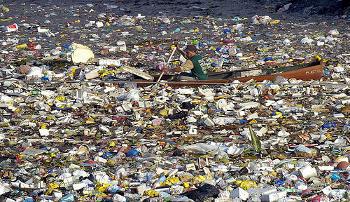Patagonia study shows Patagonia fleece jackets a pollutant

Turns out those jackets made of recycled plastic are putting lots of plastic into our oceans. Patagonia has led a study showing artificial textiles release a lot of fragments when washed. Eventually those fibers make it into the sea. Patagonia is pushing an effort amongst industry peers to develop standards limiting this form of pollution.
Via Outside:
Fast-forward four more years, and the fibers finally got everyone's attention. The science was piling on, showing that wastewater treatment plants couldn't filter out all synthetic fibers, and that toxins such as DDT and PCBs can bind to them as they make their way into watersheds. It also showed that small aquatic species ingest the fibers, and that fish and bivalves sold for human consumption also contain microfibers. Experiments have shown that microplastics can lead to poor health outcomes in some species, and research is underway to find out how the plastics affect humans.Jill Dumain, director of environmental strategy at Patagonia, was one of the people paying attention to all the news. In early 2015, she and the company's leadership decided to commission a study to find out if and how Patagonia's iconic and well-loved fleeces and some other synthetic products were contributing to the problem. The results recently came in, and they're not good.
The study, performed by graduate students at the Bren School of Environmental Science and Management at the University of California, Santa Barbara, found that during laundering, a single fleece jacket sheds as many as 250,000 synthetic fibers-significantly more than the 1,900 fibers Browne first recorded. Based on an estimate of consumers across the world laundering 100,000 Patagonia jackets each year, the amount of fibers being released into public waterways is equivalent to the amount of plastic in up to 11,900 grocery bags.
The experiment involved five pieces of apparel: three Patagonia fleece jackets, each with slightly different construction, as well as a nylon shell jacket that contains polyester insulation, plus a fifth specimen-a "budget" fleece jacket made by an undisclosed brand. Replicates of each jacket were washed multiple times, both in front-loading and top-loading washing machines. The effluent from each cycle was collected and put through a two-step filtration system that captured fibers with both a 333- and 20-micrometer mesh screen.
The jackets were then put through a 24-hour "killer wash," which Patagonia uses to simulate the aging of a garment. The researchers did this to test whether older garments might shed more fibers as they age. After repeating the washing tests on these artificially aged jackets, they saw that age indeed increases fiber release by 80 percent.